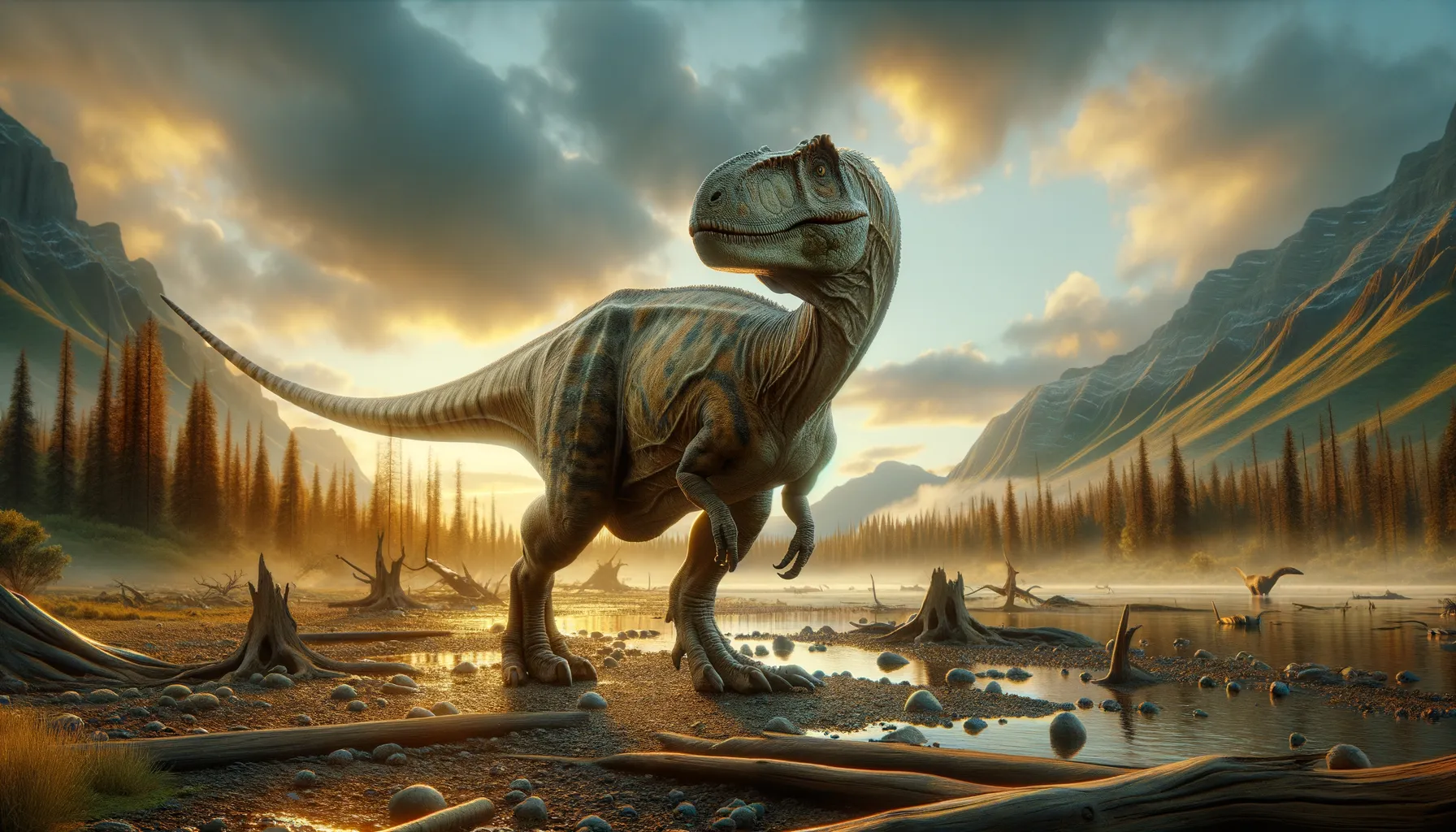
Levnesovia
A small step in dinosaur evolution's journey.
Period
Cretaceous
Length
Roughly 2 meters long.
Height
Approximately 1 meter tall.
Weight
Around 25 to 30 kilograms.
Levnesovia was a small, bipedal dinosaur that lived during the Late Cretaceous period. As a member of the hadrosauroid family, it is recognized for its transitional features between earlier iguanodonts and the more well-known hadrosaurs, or 'duck-billed' dinosaurs. First discovered in Uzbekistan, Levnesovia provides researchers insight into the evolutionary pathways of herbivorous dinosaurs in Asia before the end-Cretaceous extinction event. Its relatively small size suggests an adaptation to specific environmental niches.
Diet
Levnesovia was a herbivore, thriving on a diet of the lush vegetation available during the Cretaceous period. It likely fed on ferns, cycads, and other low-lying plants using its well-adapted teeth and jaws.
Hunting
As a herbivore, Levnesovia did not engage in hunting but had to forage through its habitat to find sufficient plant matter. It relied on its keen sense of smell and sight to locate food and avoid predators.
Environmental challenges
Levnesovia faced environmental challenges such as climate fluctuations toward the end of the Cretaceous period. In addition, it had to compete with other herbivorous dinosaurs for limited food resources. Predation by larger carnivores also posed a constant threat, requiring it to remain vigilant.
Speed
Moderate runner.
Lifespan
Estimated at 10 to 20 years.
First discovery
Discovered in Uzbekistan, 2007.
Fun Facts
- Levnesovia was a small dinosaur that lived during the Late Cretaceous period, about 85 million years ago.
- This dinosaur was discovered in the Bissekty Formation of Uzbekistan, an area rich in prehistoric fossils.
- Levnesovia belonged to the hadrosaurid family, which is known for its duck-billed dinosaurs.
- It was named in honor of the renowned Russian paleontologist Lev Nesov for his contributions to the field.
- Unlike some of its hadrosaur relatives, Levnesovia was relatively small, making it unique in its family.
- Fossils of Levnesovia suggest that it was a herbivore, likely feeding on the lush plant life of its environment.
- Levnesovia is part of a group of dinosaurs that help scientists understand the evolution and diversity of hadrosaurids.
Growth and Development
Levnesovia likely grew rapidly to reach its adult size to evade predators efficiently. Its development would have involved transitioning from a hatchling reliant on parental protection to a more independent juvenile exploring its environment. This growth process was essential for survival in its competitive ecosystem.
Habitat
Levnesovia inhabited the ancient floodplains and forested areas of what is now Uzbekistan. This region provided plentiful food and water sources crucial for its survival. The climate was likely warm and humid, offering an environment where vegetation thrived.
Interaction with other species
Levnesovia coexisted with various dinosaur species, including both herbivores and carnivores. While they competed for food with other herbivores, their communal behavior may have offered protection from predators. Their interactions with contemporary carnivorous dinosaurs shaped their daily survival strategies.
Natural lifespan
Levnesovia potentially lived for 10 to 20 years in the wild.
Reproduction
Levnesovia likely reproduced by laying eggs, similar to other dinosaur species. Nesting sites would have been carefully selected to ensure hatchling survival. Both parents potentially participated in caring for eggs and protecting newly hatched young.
Social behaviour
Levnesovia probably exhibited herd behavior, which provided safety in numbers against predators. Such social structures allowed for efficient foraging, as the dinosaurs could collectively locate food more effectively than alone. This social dynamic was critical for its survival.
Fossil locations
Fossils of Levnesovia have been predominantly found in Uzbekistan, particularly within formations dating to the Late Cretaceous. These deposits give paleontologists valuable insights into the dinosaur fauna of that era. Ongoing excavations continue to refine our understanding of its distribution.
